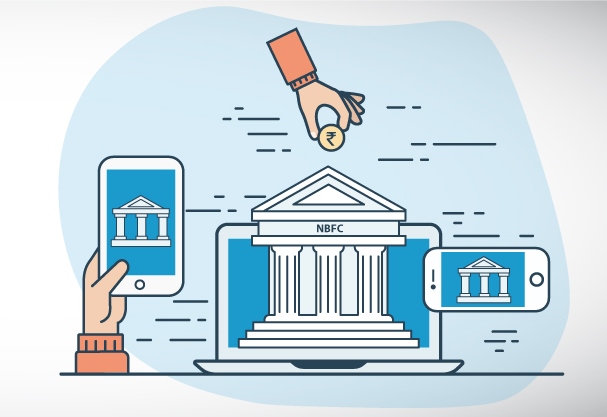Dear Customers / Borrowers, Please do not pay any money or EMIs to any representative of Hiranandani Financial Services Private Limited without getting the e-receipt issued by Hiranandani Financial Services Private Limited (HFS) only. In the absence of an e-receipt issued by HFS, the company will not be able to consider the money / EMIs paid by you. Also, you are requested to pay the amount directly through your bank a/c into HFS bank a/c.
प्रिय ग्राहक/उधारकर्ता, कृपया हीरानंदानी फाइनेंशियल सर्विसेज प्राइवेट लिमिटेड (एचएफएस) द्वारा जारी ई-रसीद प्राप्त किए बिना हीरानंदानी फाइनेंशियल सर्विसेज प्राइवेट लिमिटेड के किसी भी प्रतिनिधि को कोई धनराशि या ईएमआई का भुगतान ना करें. एचएफएस द्वारा जारी ई-रसीद की अनुपस्थिति में, कंपनी आपके द्वारा भुगतान किए गए पैसे/ईएमआई पर देयता स्वीकार नहीं कर पाएगी. साथ ही, आपसे अनुरोध है कि आप सीधे अपने बैंक खाते के माध्यम से एचएफएस बैंक खाते में राशि का भुगतान करें.
प्रिय ग्राहक/कर्जदार, कृपया केवळ हिरानंदानी फायनान्शियल सर्व्हिसेस प्रायव्हेट लिमिटेड (एचएफएस) यांच्याकडून जारी करण्यात आलेली ई-रिसीट मिळाल्याशिवाय हिरानंदानी फायनान्शियल सर्व्हिसेस प्रायव्हेट लिमिटेडच्या कोणत्याही प्रतिनिधीकडे कोणतेही पैसे किंवा ईएमआय भरू नका. एचएफएसद्वारे जारी करण्यात आलेली ई-रिसीट नसल्यास, कंपनी तुमच्याकडून भरण्यात आलेले पैसे/ईएमआय विचारात घेऊ शकणार नाही. तसेच, तुम्हाला तुमच्या बँक खात्याद्वारे थेट एचएफएस बँक खात्यामध्ये रक्कम भरण्याची विनंती करण्यात येते.
ప్రియమైన కస్టమర్లు / రుణగ్రహీతలారా, హీరానందని ఫైనాన్షియల్ సర్వీసెస్ ప్రైవేట్ లిమిటెడ్ (HFS) ద్వారా మాత్రమే జారీ చేయబడిన ఇ-రసీదును పొందకుండా హీరానందానీ ఫైనాన్షియల్ సర్వీసెస్ ప్రైవేట్ లిమిటెడ్ ప్రతినిధికి డబ్బు లేదా EMIలు చెల్లించవద్దు. HFS జారీ చేసిన ఇ-రసీదు లేనట్లయితే, మీరు చెల్లించిన డబ్బు / EMIలను కంపెనీ పరిగణించదు. అలాగే, మేము మీ బ్యాంక్ a/c ద్వారా నేరుగా HFS బ్యాంక్ a/cకి EMI మొత్తాన్ని చెల్లించమని అభ్యర్థిస్తున్నాము
அன்புள்ள வாடிக்கையாளர்களே, ஹிராநந்தனி ஃபைனான்சியல் சர்வீசஸ் பிரைவேட் லிமிடெட் (HFS) வழங்கும் மின் ரசீதை பெறாமல், ஹிரானந்தனி ஃபைனான்சியல் சர்வீசஸ் பிரைவேட் லிமிடெட்டின் பிரதிநிதிகளுக்கு பணம் அல்லது EMI களை செலுத்த வேண்டாம். HFS வழங்கும் மின் ரசீது இல்லாத பட்சத்தில், நீங்கள் செலுத்திய பணம் / EMI களை நிறுவனத்தால் பரிசீலிக்க முடியாது. மேலும், உங்கள் வங்கி A/c மூலம் நேரடியாக HFS வங்கி A/c யில் தொகையைச் செலுத்துமாறு கேட்டுக் கொள்ளப்படுகிறீர்கள்.
ಆತ್ಮೀಯ ಗ್ರಾಹಕರೇ / ಸಾಲಗಾರರೆ, ಹೀರಾನಂದಾನಿ ಫೈನಾನ್ಸಿಯಲ್ ಸರ್ವೀಸಸ್ ಪ್ರೈವೇಟ್ ಲಿಮಿಟೆಡ್ (ಹೆಚ್ಎಫ್ ಎಸ್) ನೀಡಿದ ಇ-ರಶೀದಿ ಇಲ್ಲದೆ ಹೀರಾನಂದಾನಿ ಫೈನಾನ್ಸಿಯಲ್ ಸರ್ವೀಸಸ್ ಪ್ರೈವೇಟ್ ಲಿಮಿಟೆಡ್ ಪ್ರತಿನಿಧಿಗೆ ಹಣವನ್ನಾಗಲಿ ಅಥವಾ ಇಎಮ್ಐಗಳನ್ನಾಗಲಿ ಪಾವತಿ ಮಾಡಬೇಡಿ. ಹೆಚ್ ಎಫ಼್ ಎಸ್ ಇ ರಶೀದಿಯನ್ನು ವಿತರಿಸದಿದ್ದರೆ, ನೀವು ಪಾವತಿ ಮಾಡಿದ ಹಣ / ಇಎಮ್ಐಗಳನ್ನು ಕಂಪನಿಯು ಪರಿಗಣಿಸಲಾಗುವುದಿಲ್ಲ. ಅಲ್ಲದೆ, ಹೆಚ್ ಎಫ಼್ ಎಸ್ ಬ್ಯಾಂಕ್ ಖಾತೆಯ ಮೂಲಕ ನೇರವಾಗಿ ಮೊತ್ತವನ್ನು ಪಾವತಿ ಮಾಡುವಂತೆ ನಿಮ್ಮಲ್ಲಿ ವಿನಂತಿಸಲಾಗಿದೆ.
પ્રિય ગ્રાહક / ઋણદારો, કૃપા કરી હિરાનંદાની ફાઈનાન્શિયલ સર્વિસીસ પ્રાઈવેટ લિમિટેડ (એચએફએસ) દ્વારા જ જારી ઈ-રિસીપ્ટ મેળવ્યા વિના હિરાનંદાની ફાઈનાન્શિયલ સર્વિસીસ પ્રાઈવેટ લિમિટેડના કોઈ પણ પ્રતિનિધિને કોઈ પણ નાણાં અથવા ઈએમઆઈ ચૂકવશો નહીં. એચએફએસ દ્વારા જો ઈ-રિસીપ્ટ જારી નહીં કરાઈ હોય તો તમારા દ્વારા ચૂકવેલાં નાણાં /ઈએમઆઈ ધ્યાનમાં નહીં લેવાશે. ઉપરાંત તમને તમારા બેન્ક અકાઉન્ટમાંથી એચએફએસ બેન્કના અકાઉન્ટમાં સીધા જ રકમ ચૂકવવાની વિનંતી છે.



